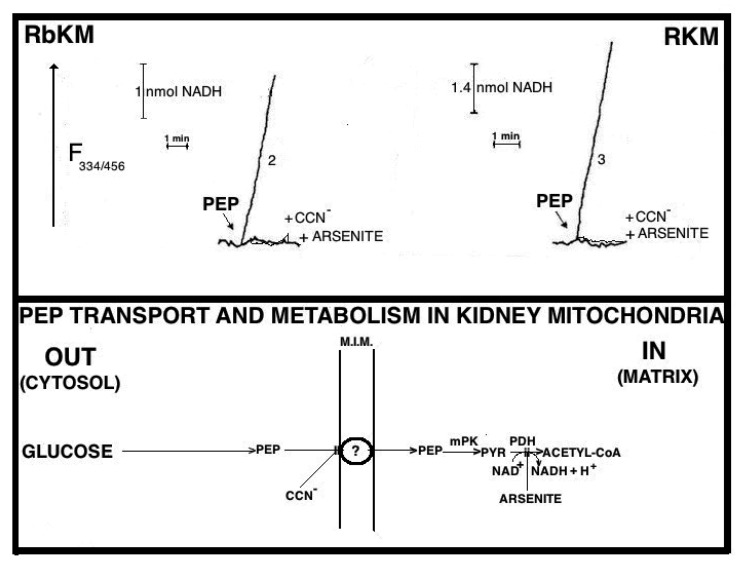Figure 7.
Phosphoenolpyruvate (PEP) can enter both rabbit and rat kidney mitochondria. From [12]. From Aracne Editrice with permission 2021. Fluorimetric investigation was made of the change in the redox state of the intramitochondrial pyridine nucleotides caused brought about by the addition of PEP. Rabbit and rat kidney mitochondria (RbKM and RKM, respectively) (2 mg protein) were suspended at 25 °C in 2 mL of standard medium consisting of 15 mM KCl, 1 mM MgCl2, 100 mM TRIS-HCl, pH 7.4. and the redox state of intramitochondrial pyridine nucleotides was followed fluorimetrically (λex = 334 nm/λem = 456 nm) as a function of time. First, either RbKM or RKM were incubated for 3–5 min with FCCP (1.25 mM) and then rotenone was added (2 mg) (not shown). At the arrow, PEP (2.5 mM) was added either in the absence or presence of α-cyano-4-hydroxy-cynnamate (CCN−) or arsenite (0.01 and 1 mM, respectively). The rate of fluorescence increase, measured as the tangent to the initial part of the progress curve, is expressed as nmol of intramitochondrial NAD(P)+ reduced/min × mg protein. PEP uptake by mitochondria was prevented in the presence of either α-cyano-4-hydroxycynnamate (CCN− 10 μM), or benzylmalonate (5 mM) (not shown), which can inhibit a variety of carriers. These simple experiments have produced the first evidence that mammalian mitochondria contain their own PK and showed that mitochondrial PEP transport occurs in a carrier-mediated manner.

